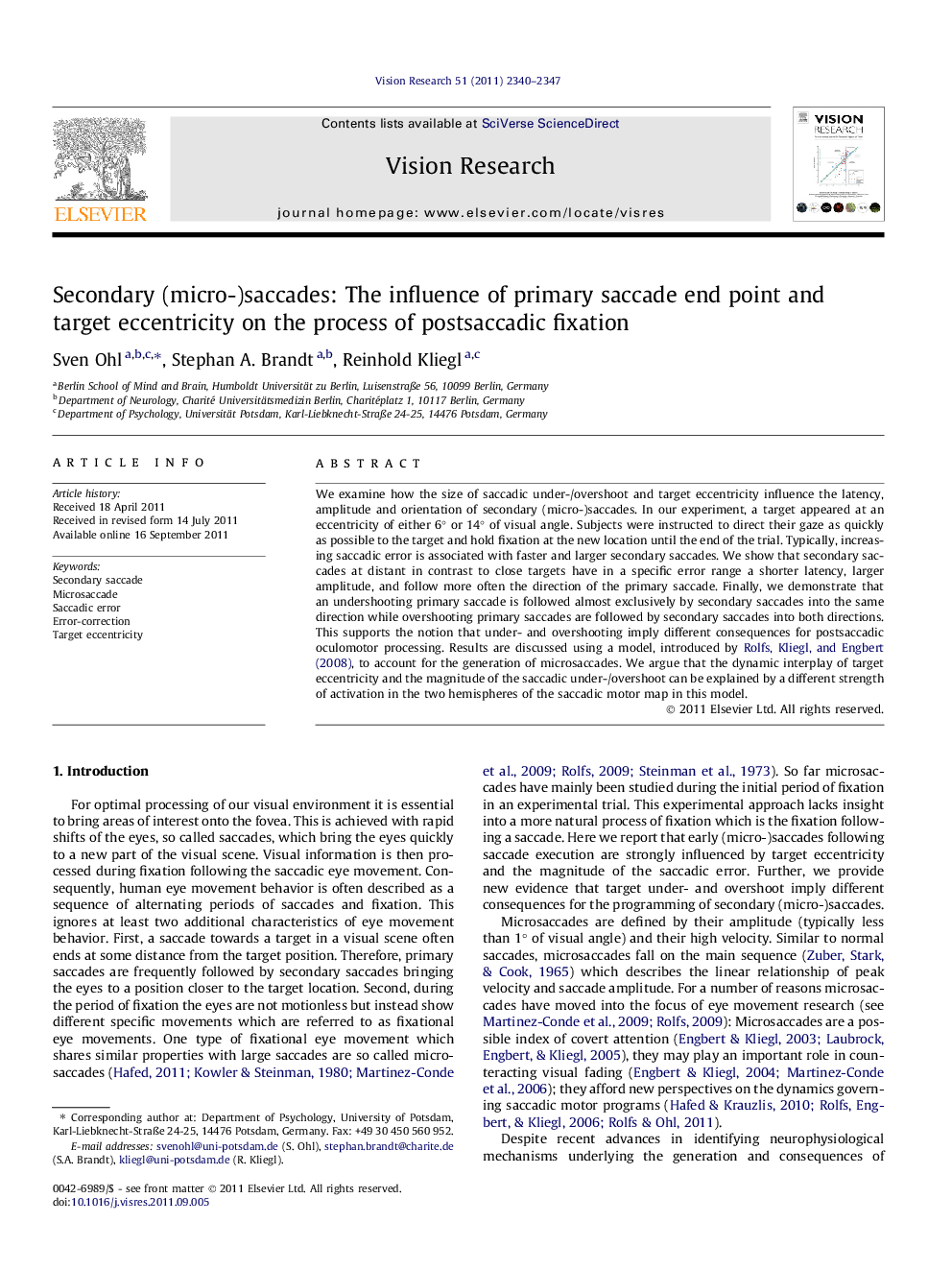| کد مقاله | کد نشریه | سال انتشار | مقاله انگلیسی | نسخه تمام متن |
|---|---|---|---|---|
| 4034134 | 1603241 | 2011 | 8 صفحه PDF | دانلود رایگان |

We examine how the size of saccadic under-/overshoot and target eccentricity influence the latency, amplitude and orientation of secondary (micro-)saccades. In our experiment, a target appeared at an eccentricity of either 6° or 14° of visual angle. Subjects were instructed to direct their gaze as quickly as possible to the target and hold fixation at the new location until the end of the trial. Typically, increasing saccadic error is associated with faster and larger secondary saccades. We show that secondary saccades at distant in contrast to close targets have in a specific error range a shorter latency, larger amplitude, and follow more often the direction of the primary saccade. Finally, we demonstrate that an undershooting primary saccade is followed almost exclusively by secondary saccades into the same direction while overshooting primary saccades are followed by secondary saccades into both directions. This supports the notion that under- and overshooting imply different consequences for postsaccadic oculomotor processing. Results are discussed using a model, introduced by Rolfs, Kliegl, and Engbert (2008), to account for the generation of microsaccades. We argue that the dynamic interplay of target eccentricity and the magnitude of the saccadic under-/overshoot can be explained by a different strength of activation in the two hemispheres of the saccadic motor map in this model.
► Secondary saccade motor programs depend on saccadic error and eccentricity.
► Minimum amplitude and maximum latency are shifted to a small overshoot.
► Saccadic over- and undershoot differ in their influence on secondary saccades.
Journal: Vision Research - Volume 51, Issues 23–24, 8 December 2011, Pages 2340–2347